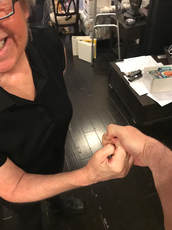 The exercise I am showing you today addresses my affected side and works my hand and arm. I wear a SAEBO-Glove 8-12 hours per day on my right hand. The reason I wear it for so long is that I generally wear it while I am sleeping at night. The SAEBO-Glove helps me because I am suffering from neurological injuries and the results are stroke-like. The tension system of the glove extends my fingers and thumb after grasping so that I can incorporate my affected right limb functionally the way it is meant to be. The reason I like this exercise is that it builds strength and mobility throughout my entire arm (and even my hand). It reminds me to bend my elbow (that is what I need for my brain!). This exercise has even helped me with bringing my arm from my side over my body to my opposite shoulder - an exercise that has worked my entire arm again, especially bending my elbow!! And I have noticed that this has helped me with daily activities like with my holding clothes so I can button and zip them. As I mentioned previously, and something I will continue to stress throughout my posts, it is pivotal to perform as many of these exercises in front of a mirror/reflection as possible. This is one of those exercises that I cannot stress the importance of a mirror to be able to watch yourself as you do it. It is our job now to train the neurons from our brain to re-engage with our muscles. Watching your elbow bend and then watching your arm straighten is so important! It has already helped me so much - my ability to “push and pull” my right arm/hand is so much stronger and better (according to Tom) since I’ve been doing these arm/hand open/close & saw exercises! Again, be sure to follow the instructions below. Many post-stroke persons are not limited by actual strength, but by the loss of muscle memory provided by some of the brain’s most elementary functions. Think of these exercises as brain games just as much as strength/mobility activities and you will be on your way to independence in no-time! If you are just starting out - post-stroke - you will probably need someone to support your movement and help when necessary. As I have said before, even if you have reached the point of physical independence after your stroke, it is still nice to have someone supporting you emotionally and mentally through these exercises. INSTRUCTIONS 1. I stand as straight as I can next to Tom with my right arm bent at the elbow. 2. He opens/closes my right hand but I watch it closely and I make sure that I am moving my hand open & close each time rather than just letting Tom force my hand to do so. 3. I repeat the “open/close” 25 times. 4. Then I allow Tom to grab my right hand with his right hand as if he were shaking my hand. 5. Then I push my arm forward. And then I pull my arm back towards me. 6. I repeat the “saw motion” 25 times. 7. On the 25th time, when my arm is pushed forward, I hold it there making sure my wrist remains straight. 8. Then I move it in circles (clockwise for 15 & counter-clockwise for 15). 9. I repeat the circles again. 10. Then I pull my arm arm back towards me. Be sure to check out my Instagram at “poststrokepeg.” God Bless You, Peg “Those who don’t believe in magic will never find it.” —Roald Dahl
0 Comments
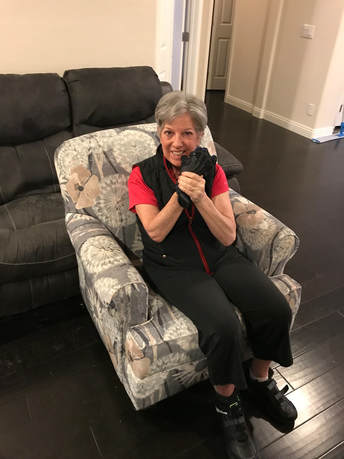 Before I start any exercises of the day, I must warm up my arms & my legs from sleeping a minimum of 8 hours. While I am still in bed I make sure I stretch as much as I can - mostly my arms, my legs, my core & whatever seems stiff. For example, I be sure to move my legs so that I lift them into a knee-bent position. I also bring my arm over my body. As I lie in bed, as best I can, I pull my arm over my body from lying next to my side (my arm, that is) across to its opposite shoulder, & then back to its side again. I do this without touching my body with my arm. Then when I am ready to get out of bed and stand up, I make sure that I allow blood and oxygen to flow through my body from top to bottom. This is when I first begin to start doing some kisses before I start walking out to my “comfy” chair for my actual kisses & leg pedaling. Now I’m ready to walk over from my bedroom to my great-room to really warm up with my actual kisses & leg pedaling. KISSES - INSTRUCTIONS
After you have managed to do this 25 times with no pain, you are ready to lift your affected arm even higher when you are reaching at your face. Start by touching your thumb to your forehead. Once you have that accomplished, try touching the top of your scalp! Eventually this will help you wash your hair with that affected arm/hand again!! As I have said before, and I’ll say it again & again, if you are just starting out - post-stroke - you will probably need someone to support your movement and help you when necessary. Even if you have reached the point of physical independence after your stroke, it is still nice to have someone supporting you emotionally and mentally through these exercises. And, again, use a mirror, it doesn’t hurt to watch your moves & improvement. LEG PEDALING - INSTRUCTIONS
Be sure to check out my Instagram at “poststrokepeg.” God Bless, Peg
"Failures are finger posts on the road to achievement." ― C.S. Lewis 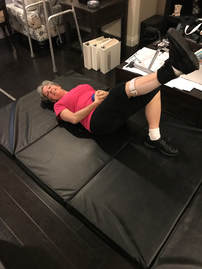 Before I start this exercise, which has proven to be very useful to both my legs, and my core/abdomen, but especially my affected right leg, I use the mat on the floor to do some of my arm exercises. With the arm exercises first I lift my affected right arm over my head (with the assistance of Tom) and bring it back to my side. I do this 25 times, all the while holding my arm straight. This gives extra mobility to my affected right arm. Then I hold my affected right arm straight up in the air for a count of (at least) 100. Then I move my right wrist around and move my right thumb and fingers to ensure movement and dexterity in my right hand, by myself. Now I am ready to move onto my legs! The exercise I am emphasizing for you today addresses my affected leg and works the entire leg and, like I said, works both legs and the core. INSTRUCTIONS
If you are just starting out - post-stroke - you will probably need someone to support your movement and help you when necessary. As I have said before, even if you have reached the point of physical independence after your stroke, it is still nice to have someone supporting you emotionally and mentally through these exercises. Be sure to check out my Instagram at “poststrokepeg.” God Bless, Peg
"It's not how far you fall, but how high you bounce that counts." ― Zig Ziglar Before I start this exercise today, which has proven to be very useful to my arm, I make sure that my arm is “limber” by doing certain exercises before I start. I certainly do “kisses” which is lifting my right hand up to my mouth-level so that my elbow bends completely and then straightens out completely. This gets it loose and “use” to moving as it needs to for this exercise. I also then do hand “turnovers” at the counter-top which trains my wrist to move as needed. To do the turnovers I flip my hand over, back and forth (although sideways), while it is flat on the counter-top. I also do my floor mat exercises which force me to hold my affected arm up on its own to the count of 100.
I make sure to put a dry tissue down on the counter where I am going to let my hand rest after it stretches out, and before it starts to move straight forward and then with the elbow bend backwards, because it needs the soft and smooth texture of the tissue for my hand to move on the counter-top. It keeps my hand from becoming chafed and scratched while it is moving forward and back. The exercise I am showing you today addresses my affected arm and works the entire arm, from lifting it up, pushing it straight forward and then bringing it down onto the counter. Once it is brought down to the counter, I push it straight forward and then pull it back by bending my elbow. I do this forward and backward motion 5 times each time I raise my arm up which is 10 times with Tom’s assistance and then 10 times on my own. The pushing forward straight and pulling back by bending my elbow mimics my cleaning the counter top with a sponge or washcloth! I be sure to do this entire drill in the bathroom at the counter because I have the full mirror to observe my entire body, not just my arm, work the exercise. The reason I like this exercise is that it builds strength and mobility throughout my entire arm. I remind myself not to use my shoulder for any part of this exercise. I really want to focus my strength on my elbow, primarily, for the bending. I also need to make sure that I don’t allow my right hand (once on the counter and pushing straight) to veer to the left - it must go straight. Again, watching in the mirror helps me immensely with this. And then when I am ready to bring it back, the same thing - I want to ensure that I am going straight back -bending the elbow and not using my shoulder. Again, the mirror helps so much. As I mentioned previously, and something I will continue to stress throughout my posts, it is pivotal to perform as many of these exercises in front of a mirror/reflection as possible. This is one of those exercises that I cannot stress the importance of a mirror to be able to watch yourself as you do it. It is our job now to train the neurons from our brain to re-engage with our muscles. Many post-stroke victims are not limited by actual strength, but by the loss of muscle memory provided by some of the brain’s most elementary functions. Think of these exercises as brain games just as much as strength/mobility activities and you will be on your way to independence in no-time! If you are just starting out - post-stroke - you will probably need someone to support your movement and help when necessary. As I have said before, even if you have reached the point of physical independence after your stroke, it is still nice to have someone supporting you emotionally and mentally through these exercises. Be sure to check out my Instagram at “poststrokepeg.” And also be sure to check out at this website under my other sections to get my blogs on getting to know me, recipes from my family and me, money-maker ideas, therapy ideas, and latest post-stroke research. INSTRUCTIONS
God Bless You, Peg “Health is the greatest strength.” ― Lailah Gifty Akita |
therapyHere you'll find drills, places of support, emotional guidance, and everything in between! Archives
January 2019
Categories |
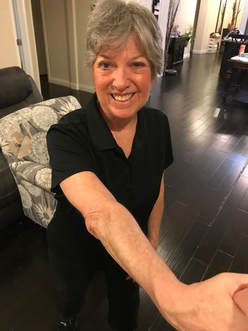
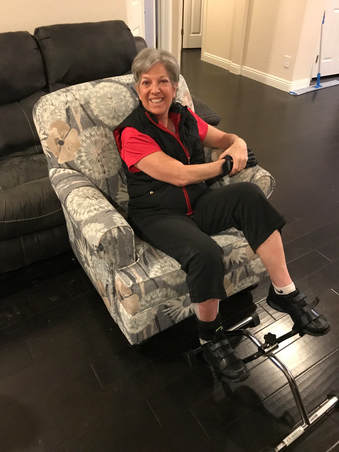
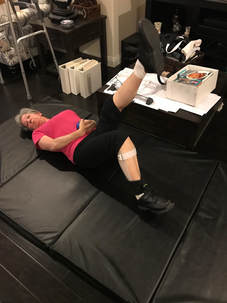
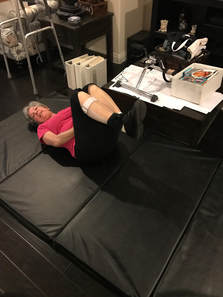
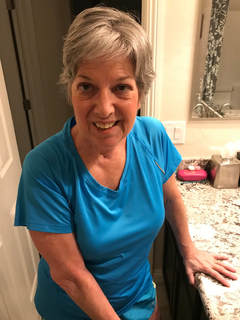
 RSS Feed
RSS Feed